Ethereum (ETH) has reclaimed the $3,000 level for the first time since February, thanks to institutional demand and strong on-chain activity.
The net capital flowing into Ethereum spot ETFs in the U.S. on a weekly basis has surged to 225,857 ETH, the highest level since inception.
This marks the continuation of a multi-week growth streak, indicating strong confidence from investment institutions. As more institutions accumulate ETH through managed products, confidence in the long-term growth of this asset remains strong.
Thus, the positive capital flow has established a potential bullish foundation, especially as ETH consolidates around a significant psychological threshold.
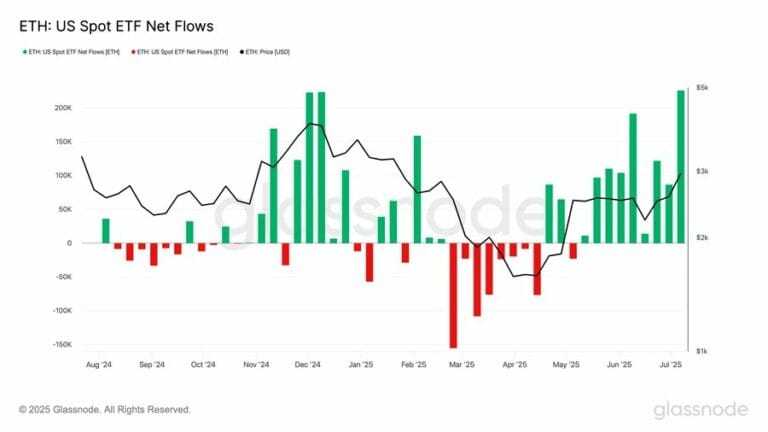
Are whales driving the ETH price rally through strong accumulation?
The net capital of large investors has surged over 163% in the past 30 days, reflecting a shift towards accumulation.
Just in the past week, net capital has increased by 14.96%, indicating that whale investors have continued to build their positions.
The 90-day volatility also shows a healthy growth of 25.15%. New interest occurring alongside Ethereum's steady recovery indicates long-term confidence from wealthy investors.
Thus, this pattern may serve as a strong signal, especially if accumulation continues alongside increasing ETF demand.
In the past, such behavior has typically occurred before prolonged growth moves in the ETH market structure.
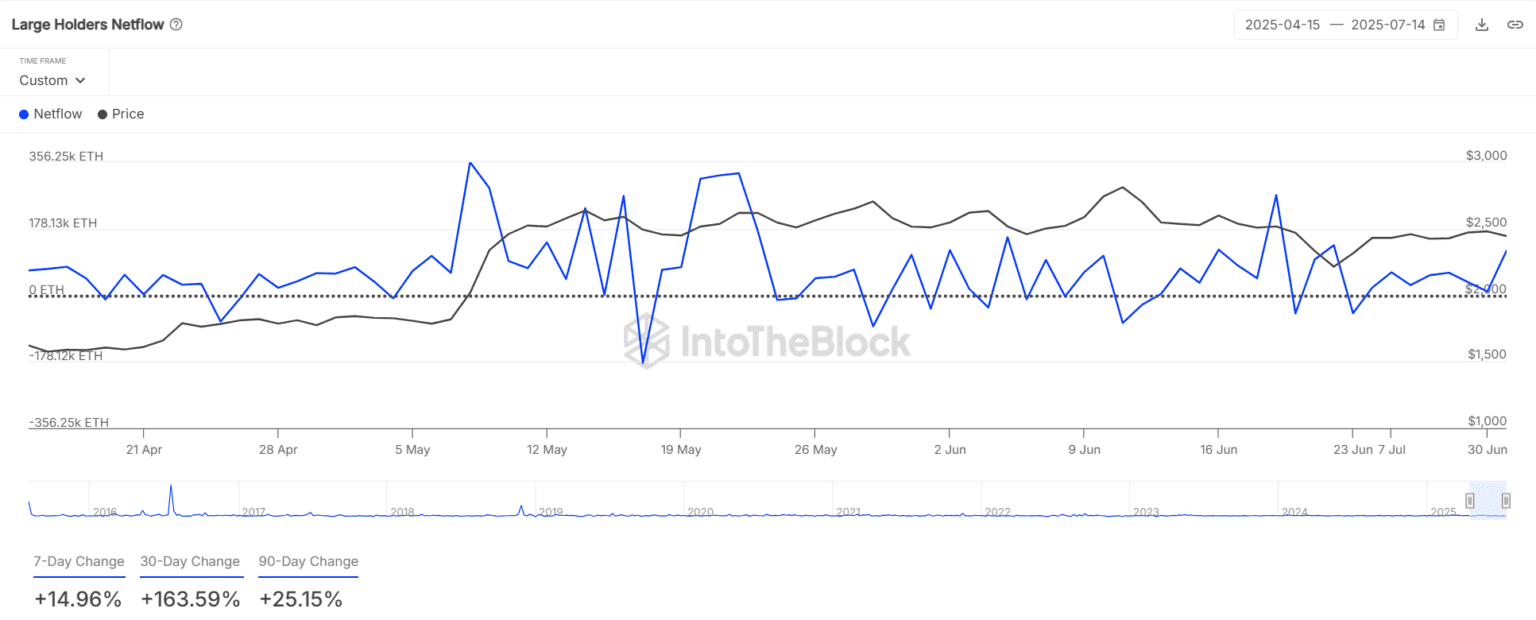
Why are whales dominating as mid-tier investors withdraw?
According to data from IntoTheBlock, the concentration of Ethereum shows a significant shift in ownership.
Whales have increased their holdings by 2.19% over the past month, while mid-tier investors have decreased by 8.17%. Interestingly, small retail investors have also shown a modest increase of 1.4%.
This change is a signal of capital rotation to more strategic, long-term investors. As mid-tier investors withdraw or reallocate their portfolios, whales seem to be absorbing the liquidity.
Thus, this reallocation could reduce short-term selling pressure while reinforcing ETH's price foundation. A higher concentration of whales often accompanies periods of stability in the continuation of growth.
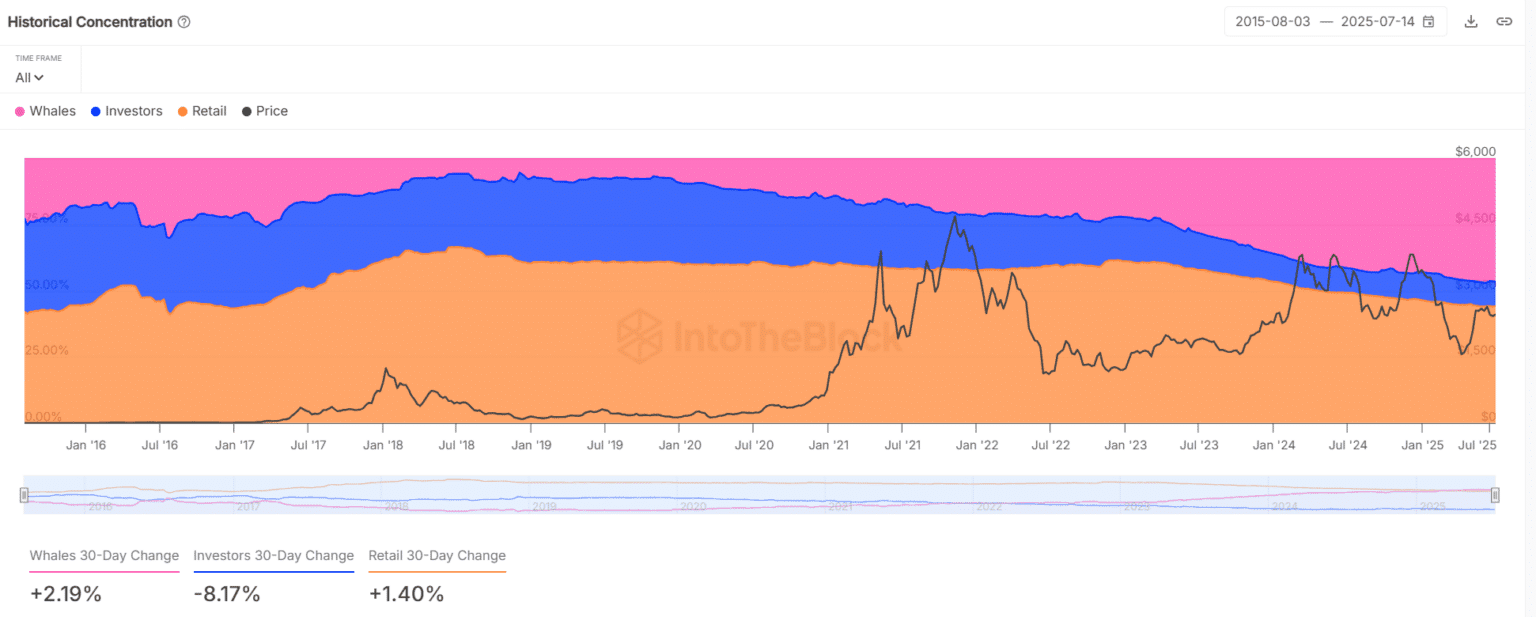
Does the decrease in exchange reserves put ETH in a supply shortage?
Exchange reserves have decreased by 3.21% in the past 24 hours, totaling $58.63 billion as of now. This decline reflects increasing withdrawals, often interpreted as a shift towards self-custody.
As ETH leaves centralized exchanges, the available supply for trading will decrease. This momentum could create upward price pressure if demand remains unchanged or increases.
Thus, lower reserves are consistent with the general trend of long-term holding behavior and reduce immediate selling pressure, supporting Ethereum's recent rally, especially when considered alongside ETF capital flows and whale activity.
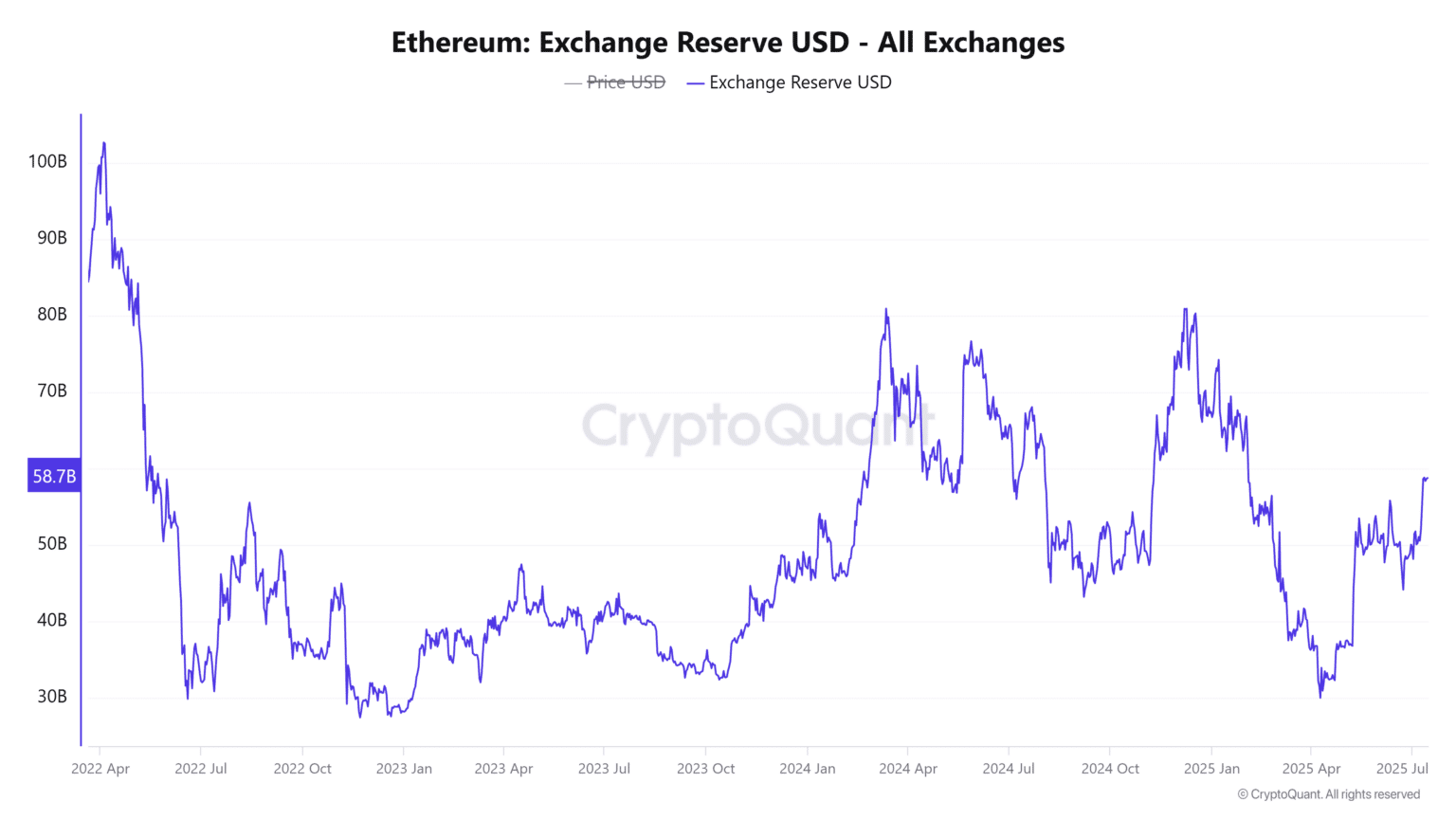
Can ETH break higher with liquidation clusters forming above $3,100?
According to Binance's ETH/USDT liquidation map, dense clusters have formed just above the $3,100 mark. This area could become the focal point of volatility as leveraged Short positions risk liquidation.
If Ethereum surpasses this area, a series of Short liquidations could drive a rapid upward momentum. However, being rejected near these levels could lead to short-term pullbacks.
Thus, traders should closely monitor these areas. Reactions around $3,100 may determine the next major move for ETH, especially as derivative pressure and spot demand converge.
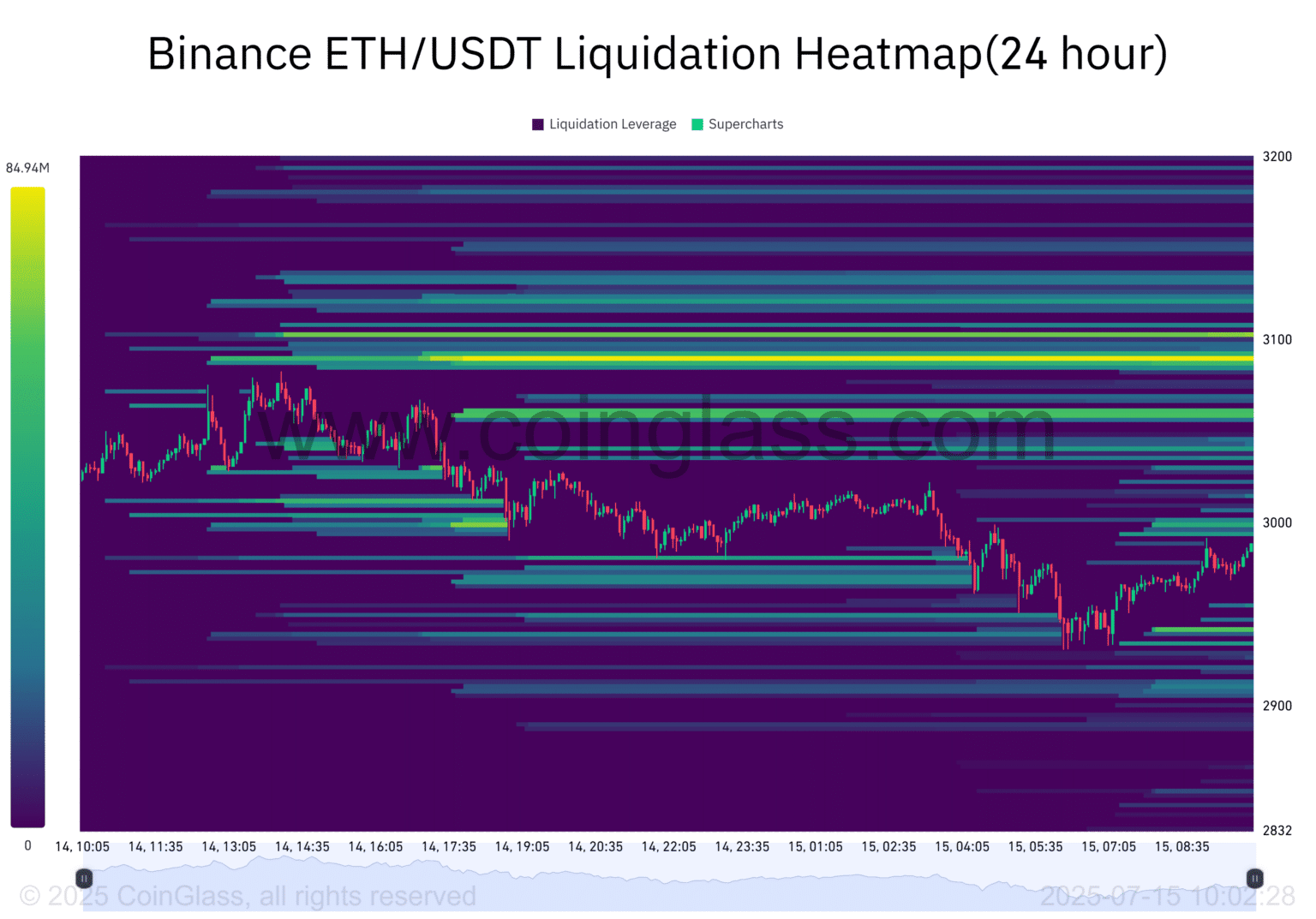
Can Ethereum maintain above the $3,000 mark?
ETH's rise above $3,000 has occurred due to strong ETF capital flows, whale accumulation, and decreasing exchange reserves.
These signals indicate stronger confidence from long-term holders and investment institutions.
However, prices remain close to high-risk liquidation zones. If ETH surpasses $3,100 and maintains prices above this level, the likelihood of continued momentum will increase.
